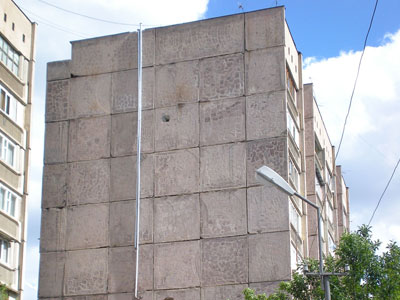Understanding barriers to energy efficiency and renewable energy investments
How can we get behind the “what” and understand market barriers?

I’m always struck by the huge opportunities for green energy projects that are “win-win”. These projects make economic and financial sense while benefiting the environment. So why aren’t these projects being implemented? Understanding the barriers to energy efficiency and renewable energy investments is key to making projects happen. But successful project design requires going beyond a simple barrier analysis that examines only “what” is happening.
Building on E.F. Schumacher’s famous saying, we need to find out what people are doing – and then understand why – before helping them to do it better. In other words, we need to “get behind the what”! At E Co, we’ve adopted several approaches that we use to maximize our understanding of barriers:
Start by asking “what” is happening, but then focus on understanding “why do people do what they do?”
Much barrier analysis that we’ve seen stops at the “what”. But designing sustainable energy efficiency and renewable energy initiatives requires a deep understanding of why decisions are being made. Many things that people do might seem crazy at first glance! However, there are often very good reasons why people behave in the way that they do.
For example, in many parts of Eastern Europe, including Belarus and Russia, we’ve seen people installing their own electric boilers while they are still connected to much lower cost district heating systems. This behaviour seems odd, but people are actually ensuring their own hot water supply when the community system is shut off for a month or two of repairs that happens every summer. In some countries, where district heating systems were particularly unreliable, we’ve seen other creative solutions!
Map the market
To help identify root (and interrelated) causes, we recommend using mapping methodology that provides a consistent way of examining the situation and pinpointing the key barriers. Market mapping helps us to understand how the market currently works by mapping flows of resources or money. Then, we can better identify where to intervene.
For a project in Romania on fuel poverty, E Co. mapped the flows of money, information and resources to understand how households made decisions when doing self-upgrades (i.e., DIY of low quality/non energy efficient home improvements). This analysis gave insight into the impacts of subsidies, potential intervention points for savings and ultimately the barriers to addressing fuel poverty at the national level.
E Co. used a similar systematic approach to verify the market barriers to private sector investments in grid connected and captive power renewable energy in Kenya. A problem tree helped visualize the cause-effect hierarchy between market barriers. Above the “starting” mid-level key problem (“low level of renewable power production”) are the effects (such as “over-dependence on traditional sources of energy” and ultimately “high GHG emissions”) and below this are the many causes. Visually, this problem tree highlights the fact that a key barrier (problem) is the high relative cost of renewable power although this has many interrelated causes.
Facilitate the analysis
People at the local level have unique insight into what could help their situation. However, we’ve also found that people closest to the problem frequently can’t clearly see the barriers themselves! Often they need support to conduct barrier analysis and then design removal strategies. We’ve found that the mapping tools mentioned above are particularly useful as inputs to facilitated stakeholder discussions of barriers.
Understanding market barriers is fundamental to designing energy efficiency and renewable energy projects. Only by digging deep, mapping the market, listening to those who face the problem every day and continuing to ask “why” can we design a project that will be sustainable.
If you’d like to find out more about how you can map your market, or better understand your market’s barriers, feel free to contact us.